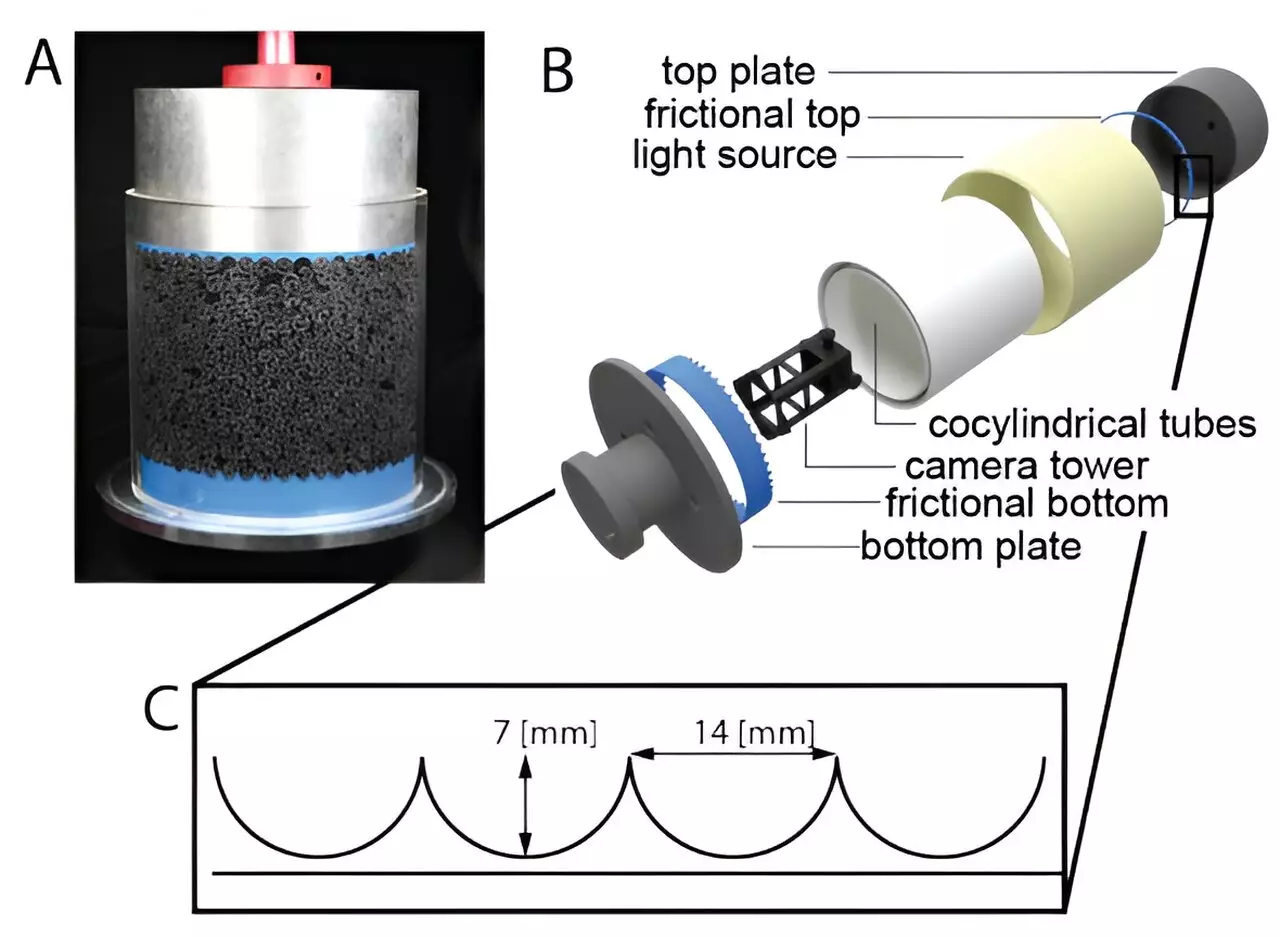Walking on sand at the beach versus observing sand flowing in an hourglass are two vastly different experiences. These discrepancies highlight the unique properties of granular materials such as sand that have captivated the interest of scientists for years. While previous research has focused on fine-tuning the flow properties of granular materials, the compressibility properties have proven to be more challenging to modify. However, a recent study conducted by researchers from the University of Amsterdam and Santiago in Chile has successfully designed new granular materials that exhibit both compressibility and flow properties, opening up a multitude of practical applications.
One striking example of a granular metamaterial is the tetrapods found along the coast of Japan. These enormous concrete blocks serve as coastal erosion safeguards due to their unique shape, which hinders the flow of the blocks and maintains their position. Unlike conventional boulders, tetrapods are almost incompressible and demonstrate poor flowing characteristics. This showcases the challenge of creating granular materials that can be compressed easily while still flowing efficiently, a feat that was achieved by the researchers from Amsterdam and Santiago, leading to groundbreaking discoveries.
Daan Haver, the first author of the publication detailing the research findings, emphasizes the importance of constructing materials with desired responses through geometric manipulation. By modifying the grains to shrink radially under pressure, the researchers were able to create a granular material that maintains its free space between grains during compression, resembling the behavior of a liquid. This unique property not only enhances compressibility but also improves flowing capabilities, offering a new direction in material design.
The implications of the new granular metamaterials are vast, especially in the realm of shock dampening. The researchers demonstrated that by dropping a metal disk into a packing of the new grains, the disk decelerated gradually and exhibited minimal bounce-back. This efficient energy transfer within the packing can have significant implications for scenarios requiring impact mitigation, such as cushioning for speed skaters. The utilization of these innovative grains can potentially reduce the impact force experienced by athletes during high-speed collisions, revolutionizing safety measures in various sports.
The development of compressible granular materials with enhanced flow properties marks a significant advancement in material science. The ability to manipulate the properties of granular materials opens up a multitude of opportunities in various fields, including construction, manufacturing, and even medical applications. By further exploring the potential of granular metamaterials, researchers can continue to innovate and improve existing technologies for the benefit of society as a whole. The possibilities are endless, and the future of material engineering is brighter than ever before.
The research conducted by the University of Amsterdam and Santiago in Chile has unveiled a new frontier in material science with the creation of compressible granular metamaterials. These innovative materials exhibit properties that have long been deemed impossible, opening up new avenues for exploration and application. As we continue to push the boundaries of material engineering, the potential for impactful discoveries remains vast. Granular metamaterials are poised to revolutionize industries and technologies, shaping a future where materials are not just passive components but active contributors to progress and innovation.


Leave a Reply